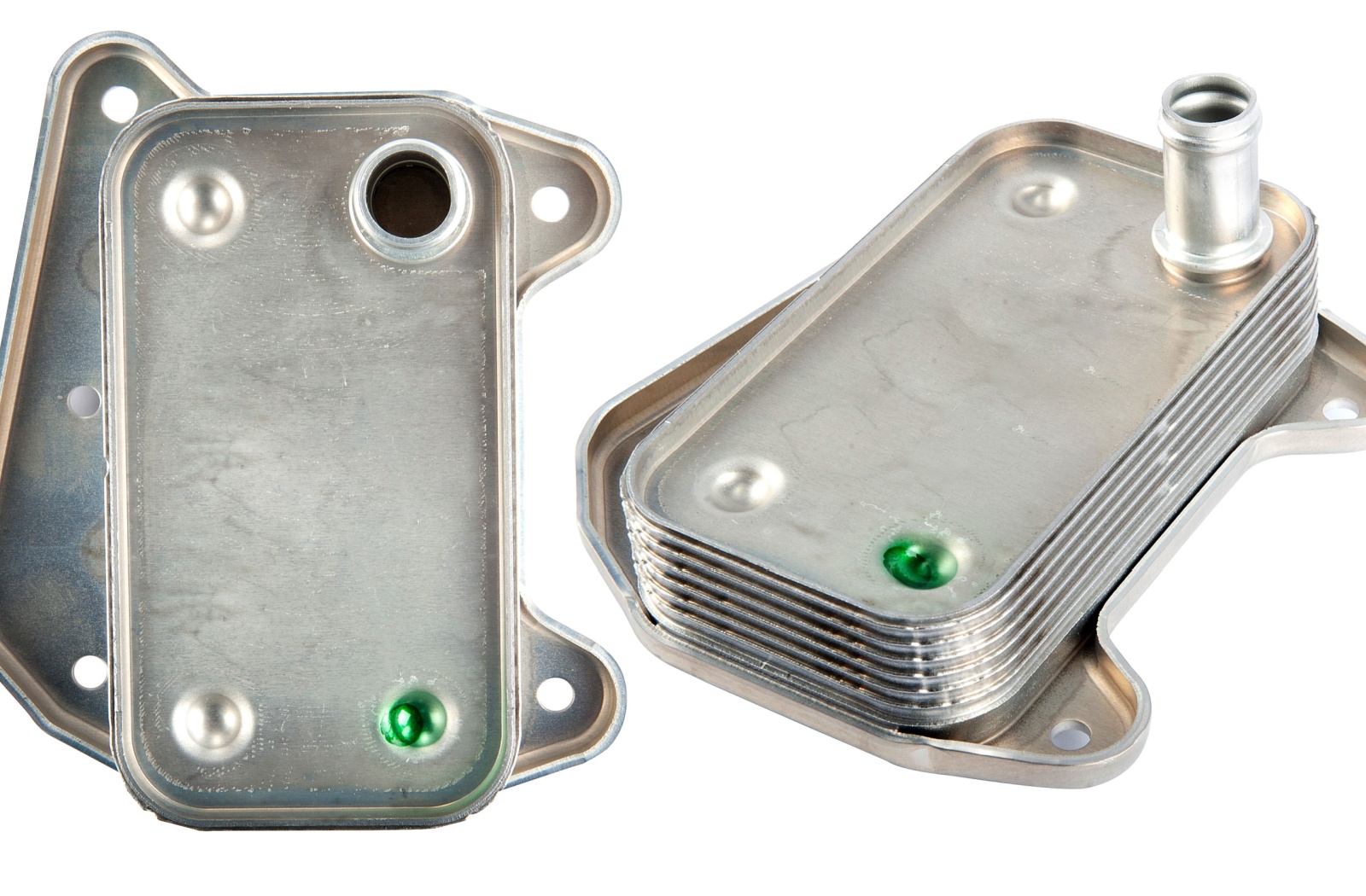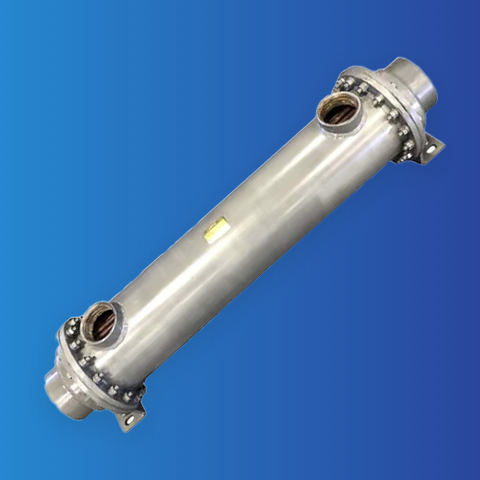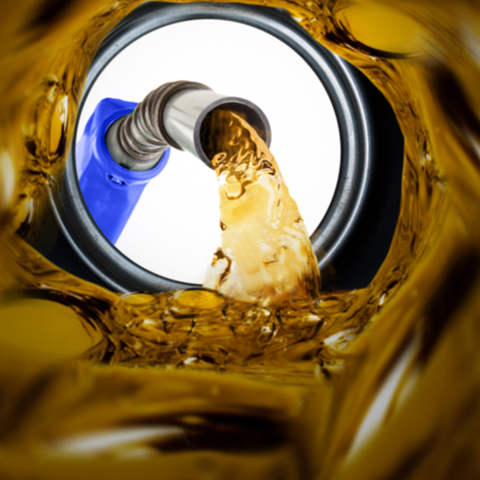Oil coolers play a crucial role in the performance and longevity of various types of machinery, especially vehicle engines. Lubricant coolers are typically offered in four styles, utilizing either air-to-fluid or fluid-to-fluid heat transfer. The 4 main types of oil coolers are aluminum, copper and steel tube aluminum shell, removal bundle tube and shell, and stacked plate oil coolers. Regardless of the type, their primary purpose is to help maintain optimal oil temperature in your vehicle.
Having a good grasp of the different types of oil coolers available, their specific functions, and their proper maintenance considerations can help you ensure your vehicle or heavy-duty machinery are running efficiently.
It is important to note that choosing the right equipment for your vehicle is not always a black and white answer. So, it is often essential to consult a professional who can recommend the optimal oil cooler and install it according to manufacturer specifications.
Understanding Oil Coolers
An oil cooler is a device designed to reduce the temperature of oil used in engines and machinery. It is essential for stopping oil from overheating, which can lead to inefficiency and mechanical failure. By circulating the oil through the cooler, the system ensures that the engine returns to or remains in its optimal operating temperature range.
Oil coolers transfer heat from the oil to another medium, usually air or water. This process dissipates the excess heat and keeps the oil within the optimal temperature range. The mechanism involves a series of tubes, fins, and sometimes fans that facilitate efficient cooling.
Air-Cooled Oil Coolers/Tube and Fin Oil Coolers
Air-cooled oil coolers use air as the medium to dissipate heat from the oil. These coolers consist of a series of tubes and fins through which the lubricant passes. As the lubricant flows through the tubes, the fins increase the surface area exposed to the air, facilitating efficient heat transfer.
One of the primary benefits of air-cooled oil coolers is their simplicity. They do not require a water supply, making them ideal for applications where water is scarce or unavailable. Additionally, they are relatively easy to install and maintain.
Air-cooled oil coolers are commonly used in automotive applications, such as trucks, cars, or motorcycles. Their ability to operate without water makes them versatile and suitable for a wide range of environments.
Oil Cooler Applications
When it comes to lubricants in vehicles, engine oil is typically the first thing that comes to mind. While it is the most commonly used lubricant in oil cooler systems, other fluids also benefit from cooling, including power steering fluid, transmission fluid, differential fluid, and lubricants for various types of machinery. Since oil coolers have a wide range of uses, let’s take a closer look at some of the most common application scenarios, such as:
- High Temperature Climates – regions with high ambient temperatures place extra strain on engine lubricants, as mechanical systems struggle to release heat into the environment as effectively as they would in cooler conditions.
- High-Load, Low Airflow Conditions – especially with enclosed power transmission and stationary systems, heat produced from high-load equipment that does not receive ample air flow needs additional means of dumping waste heat.
- High RPM Systems – friction is especially problematic at high engine RPMs, making such applications perfect for oil coolers to help protect sensitive parts by keeping oil temperatures low.
- Emergency and Mission-Critical Equipment – when it comes to emergency response generators and engines, failure is not an option. This counts for first responder vehicles and backup infrastructure generators as well (such as those used for hospital ICU wards).
- Frequent Start/Stop System – certain vehicles and mechanical conveyance systems start and stop very frequently, and are under high load (generating high heat) during their short bursts of activity. In these systems, onboard cooling is usually not enough, as more heat has to be dumped in less time.
- Rinse Cooling – certain industrial applications use lubricating oils to rinse over mechanical tooling, such as with CNC machining systems. Here, lubricants rinse away debris and particulates while also removing work-induced heat. Dealing with the rinse particulates can be challenging, but assuring a cool, consistent tool temperature is worth the effort.
Ideal applications for oil coolers typically target one of two primary functions:
- To bring a lubricant’s temperature down within its recommended operating range in order to avoid heat-induced failure (solving for system reliability), or
- To extend a lubricant’s operating life (solving for system efficiency)
This second function relates to the chemistry principle known as the Arrhenius Law, which explains that for every 10°C drop in a lubricant’s base temperature, its lifespan is doubled. This provides strong justification for using oil coolers wherever possible, primarily to minimize waste, reduce downtime, and cut costs associated with replacing lubricants.
Makes of Oil Coolers
Several kinds of materials are used to make oil coolers, each with its ideal uses.
Aluminum Oil Coolers
Aluminum oil coolers are popular due to their lightweight construction and excellent heat dissipation properties. They are highly efficient in transferring heat away from the engine oil, ensuring optimal performance.
One of the significant advantages of aluminum oil coolers is their resistance to corrosion. This makes them ideal for use in various environments and climates, providing long-lasting durability.
Copper & Steel Tube Aluminum Thin Shell Oil Coolers
Copper and steel tube aluminum thin-shell oil coolers combine the best of both materials. The copper or steel tubes provide strength and durability, while the aluminum shell offers excellent heat dissipation.
The combination of materials in these coolers allows for enhanced heat transfer capabilities, making them highly effective in maintaining the proper oil temperature.
Removal Bundle Tube & Shell Oil Coolers
Removal bundle tube and shell oil coolers are designed with ease of maintenance in mind. The removable bundle allows for straightforward cleaning and inspection, ensuring that the cooler remains in optimal condition.
These coolers are built to withstand demanding conditions, making them suitable for heavy-duty applications. Their robust construction ensures long-lasting performance even in harsh environments.
Plate Oil Coolers
Plate oil coolers or stacked plate oil coolers are known for their compact design, making them easy to install in tight spaces. Despite their small size, they are highly efficient at transferring heat away from the engine oil.
The plate design allows for a large surface area in a small form factor, providing excellent heat transfer capabilities. This makes them ideal for vehicles with limited space but high cooling requirements.
Maintenance & Care
Maintaining your oil cooler is essential for ensuring its longevity and performance. Working with an experienced heat transfer specialist can help you get the routine maintenance needed to prevent issues and keep your machine running smoothly.
Regular Inspections
It is important to regularly inspect your oil cooler for signs of wear or damage. Look for leaks, cracks, or corrosion that could affect the cooling efficiency. Early identification of issues allows you to address them before they become significant problems.
Cleaning & Debris Removal
You should clean your oil cooler regularly to remove any debris or buildup that could hinder its performance. Dust, dirt, and other contaminants can accumulate on the fins and tubes, reducing the cooler’s efficiency. Use appropriate cleaning methods to ensure your oil cooler remains in optimal condition.
Replacement of Worn Parts
Replacing any worn or damaged parts promptly helps maintain your oil cooler’s effectiveness and prevent more serious issues. Over time, components such as tubes, fins, and seals may wear out, affecting your cooler’s performance. Regularly assessing and fixing or replacing these parts can extend the life of your oil cooler.
Talk to Us About Your Oil Cooler Needs
The rise of the internet has given way to a wealth of information on the various aspects of running and maintaining a vehicle. From air conditioning systems to oil coolers, the information is plentiful, but knowing what parts and work you need can be overwhelming and complicated. Talking with a professional can save you time and money in the long run.
There are a ton of details to review when selecting a new oil cooler, but thanks to our deep experience and technical expertise, we can often match an application to an existing core design and customize it for further match. Call Northland Radiator today to request a quote. Our heat transfer specialists are happy to discuss your next heavy equipment transfer project or vehicle’s need and provide you with an estimate for your oil cooler repair or replacement.











